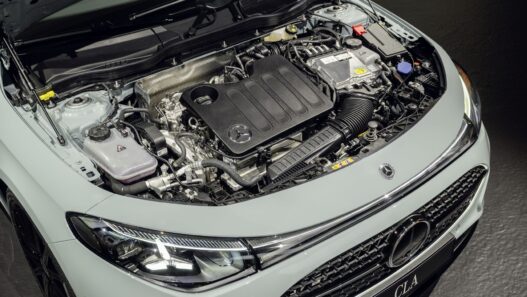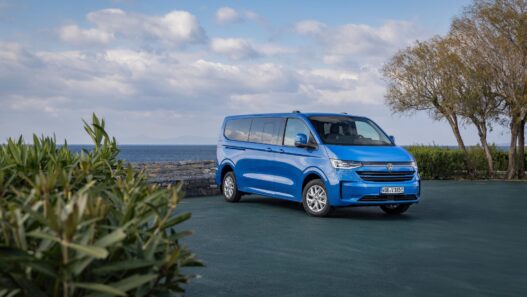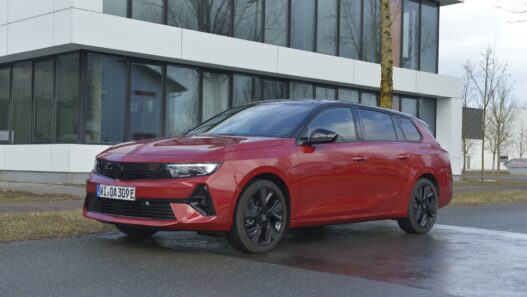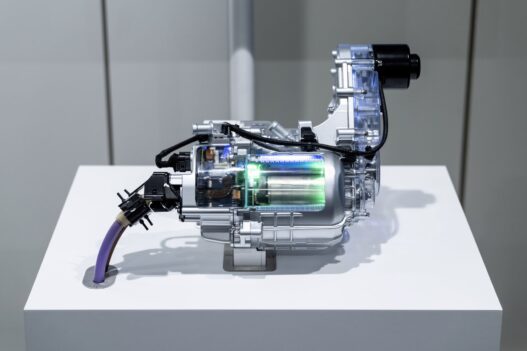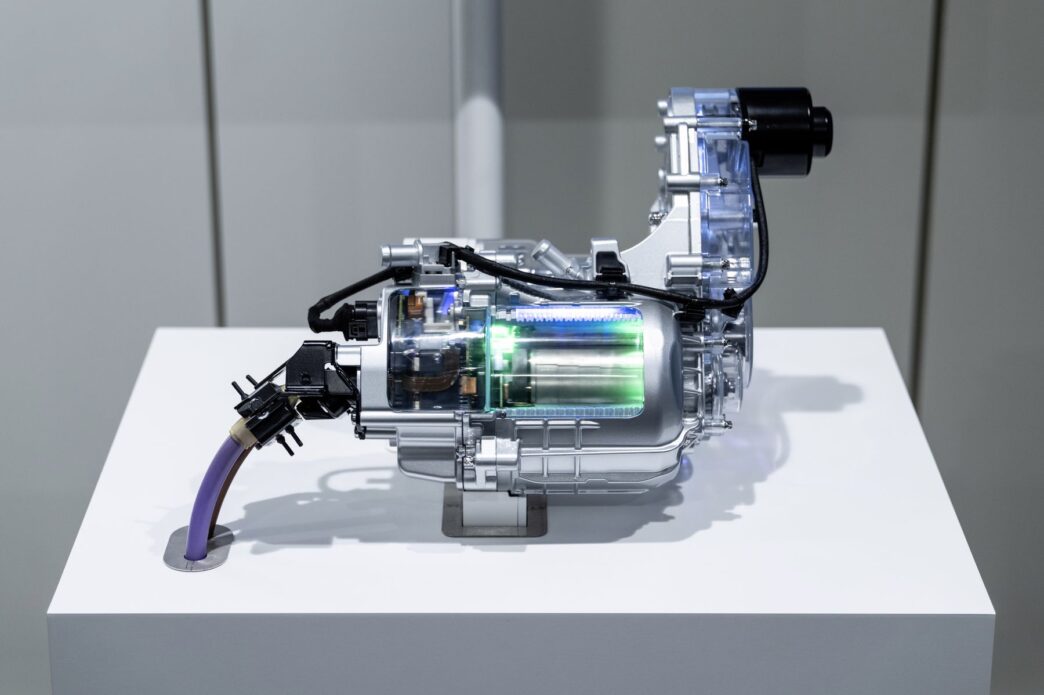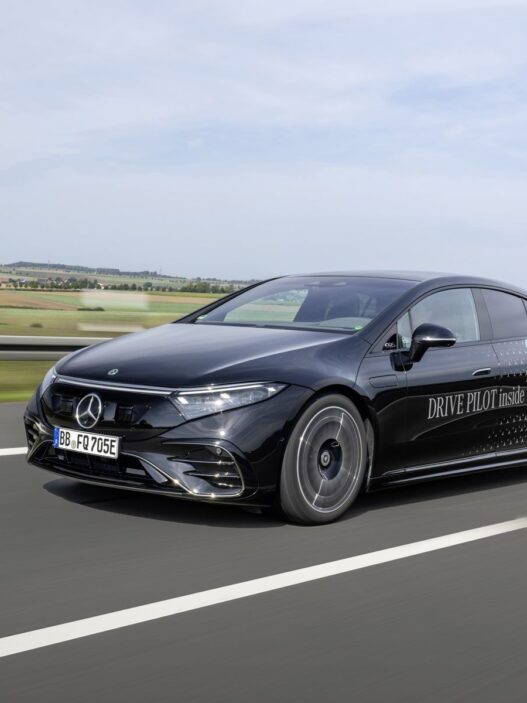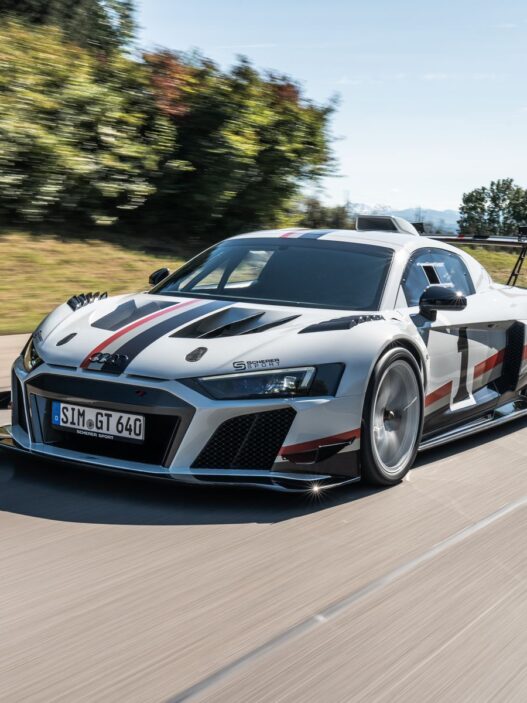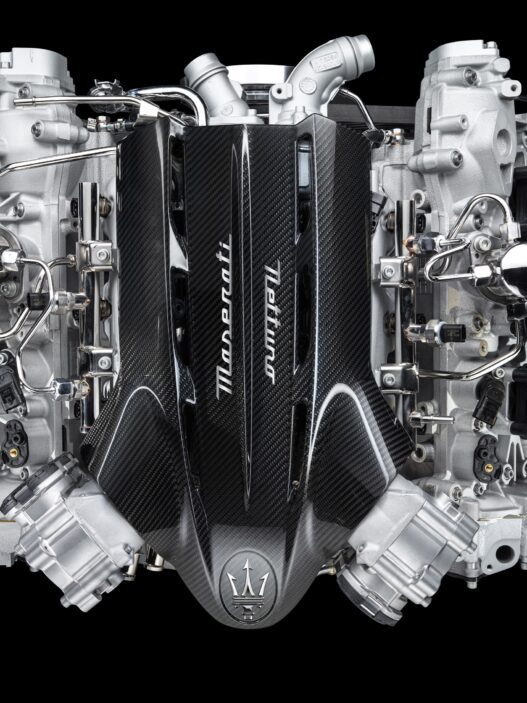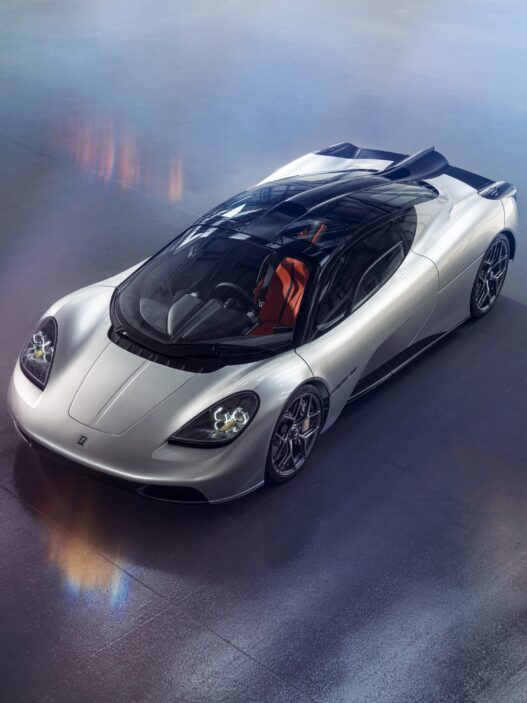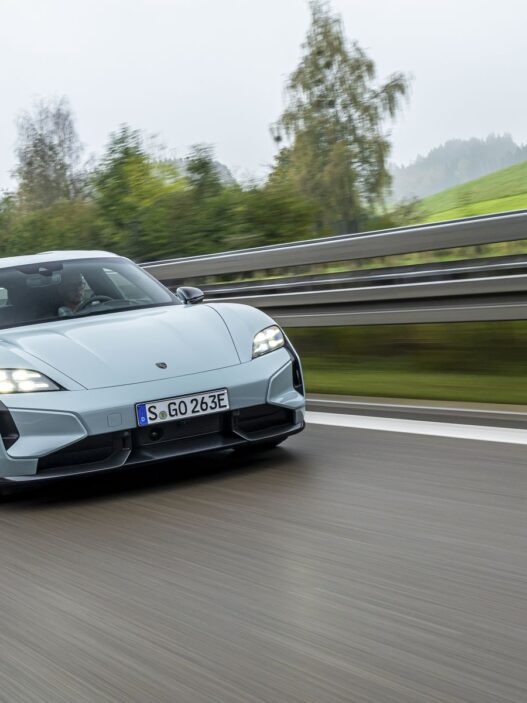Audi’s new Mild Hybrid Plus system not only cuts fuel consumption in its latest models but also enhances driving dynamics. Here’s how it works, as experienced in the Audi A5 2.0 TDI Quattro.
Audi Mild Hybrid Plus: A Step Towards Full Electrification
Audi’s roadmap to electrification is clear: starting in 2026, the company will only develop fully electric vehicles. But until then, combustion engines remain a key part of its portfolio. As the push for pure EVs hasn’t met the expected demand, electrification solutions like plug-in hybrids and 48-volt mild hybrid systems are stepping in to bridge the gap.
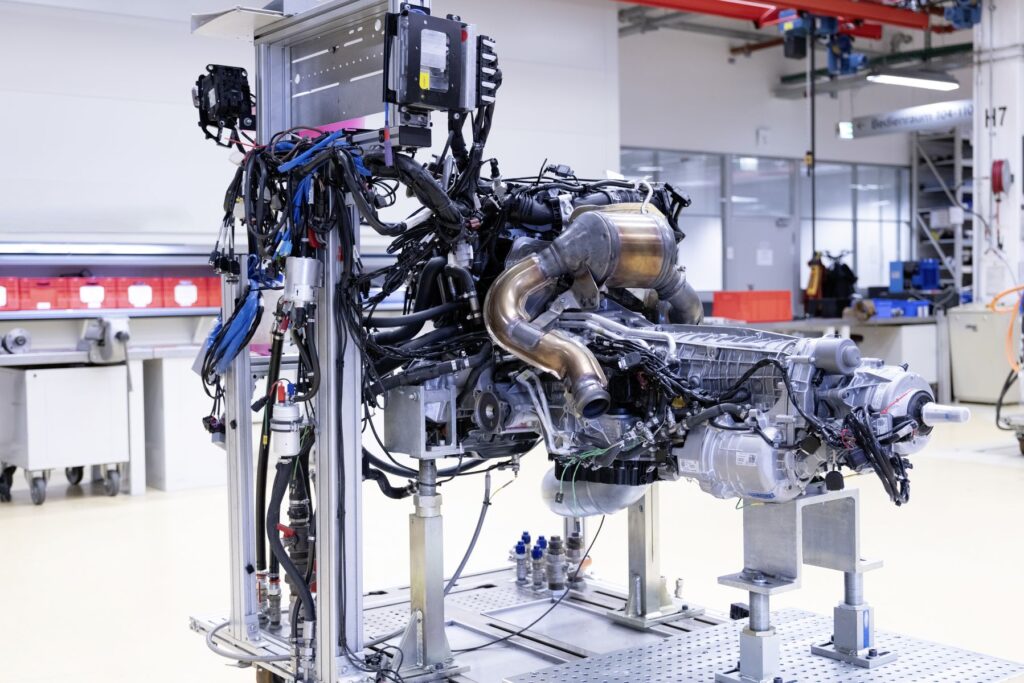
Among these, Audi’s Mild Hybrid Plus (MHEV+) system stands out as a future-ready solution. Its development coincided with the rollout of Audi’s Premium Platform Combustion (PPC), and the engineering team had to choose the right mild hybrid setup. After careful deliberation, Audi settled on a P3a hybrid system, which enhances a belt-starter-generator (RSG) with a Transmission-Side Generator (TSG) mounted on the gearbox output shaft. This system delivers up to 18 kW (24 hp) and 230 Nm of torque, while regenerative braking reaches up to 25 kW—even bringing the car to a full stop if needed.
Key Features of the P3a System
The P3a setup is designed for front-wheel-drive vehicles, but Audi’s Ultra Quattro technology integrates the rear axle for all-wheel-drive models. The combustion engine is started via the RSG. A major advantage is the instant availability of electric power, especially in urban settings and at lower speeds. However, above 140 km/h, the internal combustion engine takes over completely, unlike ISG systems that can assist at higher speeds by leveraging the automatic transmission.
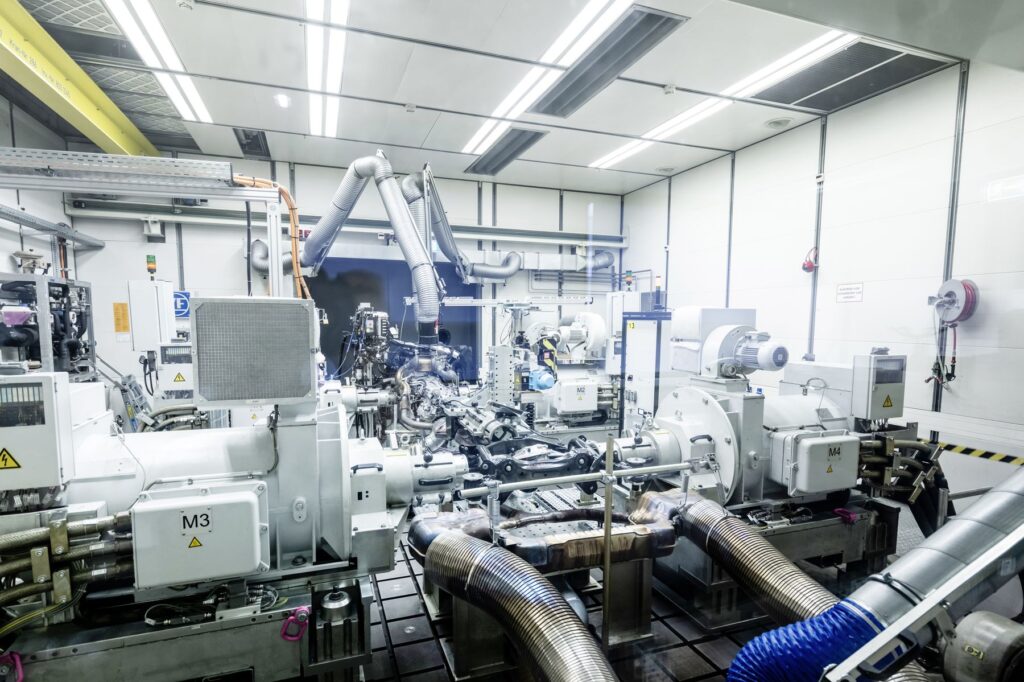
Audi engineers faced significant challenges with this design. “It was a fight for millimeters,” explains Audi engineer Florian Then, pointing to a ridge in the PSM housing that allowed the compact, 21-kg TSG to fit within the transmission tunnel. The TSG and its electric motor are bespoke Audi developments, reflecting the five years of effort invested in making MHEV+ a robust link to full electrification.
Advanced Engineering for Real-World Efficiency
The MHEV+ system includes a 48V lithium iron phosphate battery with a capacity of 1.7 kWh, enabling limited electric-only driving. The battery’s water-cooled design ensures durability and supports various tasks, such as regenerating the diesel particulate filter (DPF). When regeneration is needed, the system adjusts engine load and temperature seamlessly to optimize combustion.
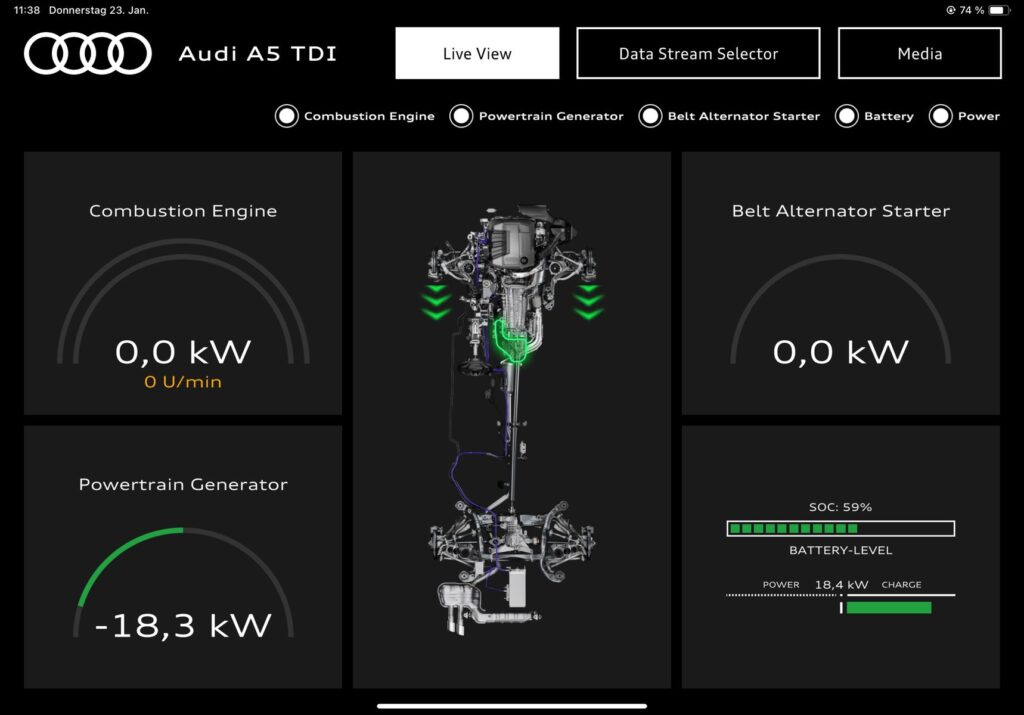
Fuel consumption is minimized through innovative energy recovery. During gear shifts, the RSG synchronizes the engine’s RPM with the next gear while recapturing energy. These measures reduce fuel use by up to 0.38 l/100 km for diesel engines and up to 0.74 l/100 km for petrol models.
On the Road in the Audi A5 2.0 TDI Quattro
We put the MHEV+ system to the test in the Audi A5 2.0 TDI Quattro, powered by a 150 kW (204 hp) diesel engine. The seamless interaction between components was impressive. Using an onboard tablet, we could monitor the precise timing of each unit’s engagement.
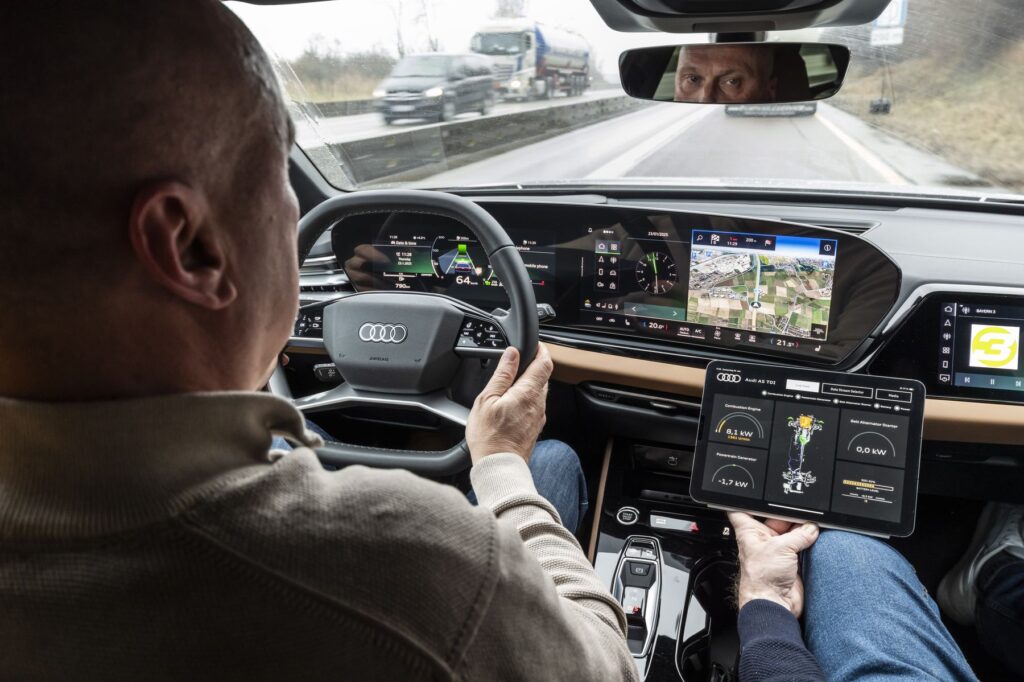
Switching the dual-clutch transmission to S-mode highlighted the system’s dynamism, with electric power boosting acceleration out of corners. Even a launch control feature is available for enthusiasts. We could also manually shift into sixth gear and hold it comfortably at low RPMs, thanks to the electric assist.
Driving with a light foot allowed us to travel through entire towns on electric power alone. Clever regenerative strategies ensured we didn’t drain the battery, achieving 21.9 minutes of electric-only driving during a 72.2-minute trip. The potential for greater electric driving was evident, but our focus on testing the system’s dynamic traits, including the rocket-like launches, influenced the results.
A Hybrid System That Delivers
Audi’s Mild Hybrid Plus system is no stopgap solution. Instead, it’s a sophisticated bridge to electrification, combining efficiency with enhanced driving dynamics. Whether navigating urban streets or testing its sporty edge, the MHEV+ shows that the most important component behind the wheel is still the driver.

